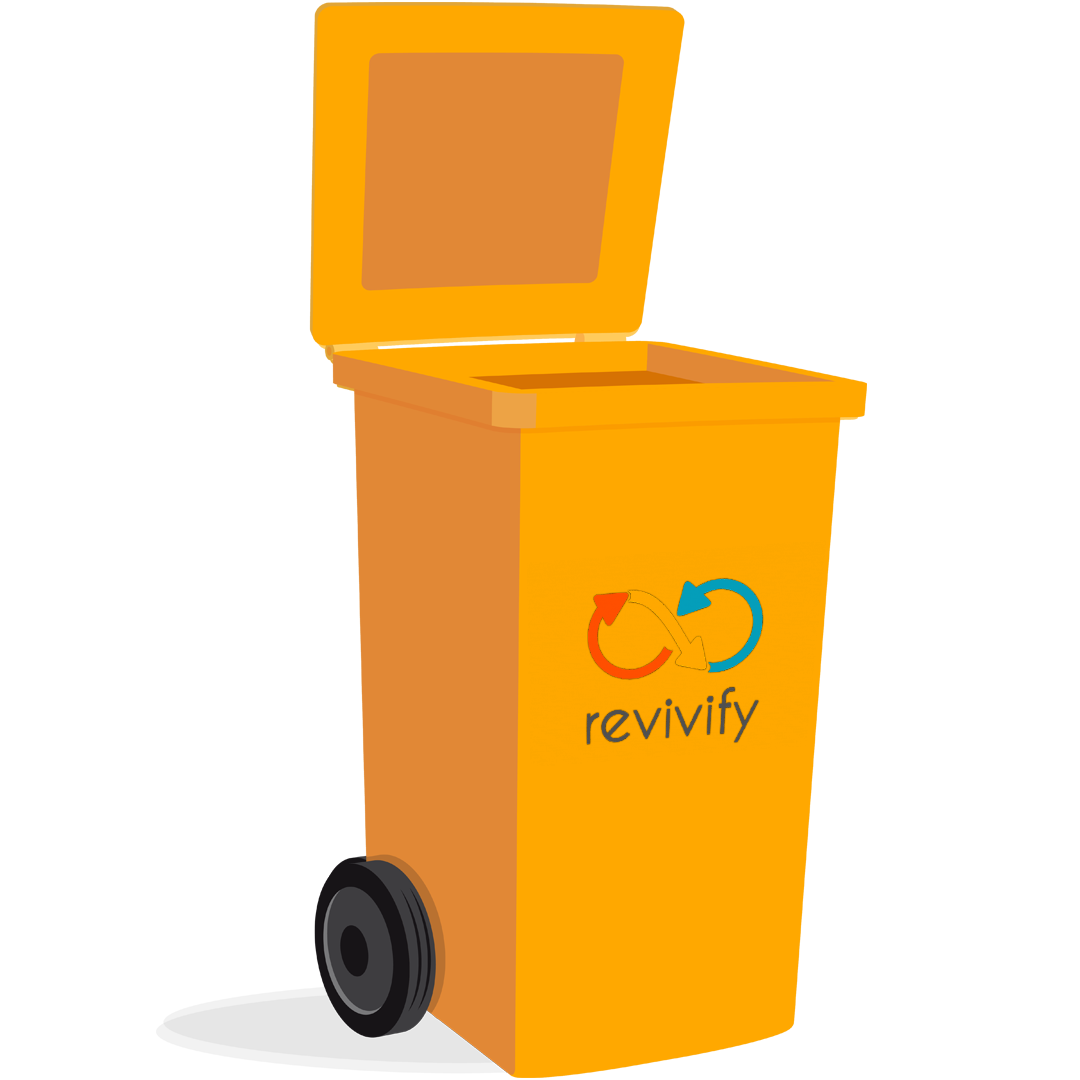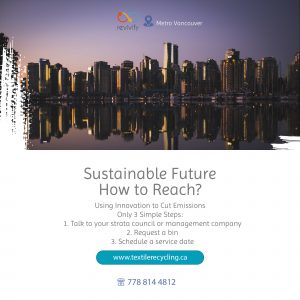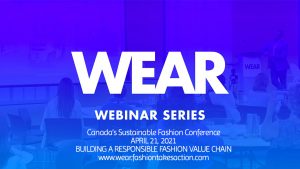
What Is Textile Recycling?
By Rick Leblanc – www.thebalancesmb.com The basis for the growing textile recycling industry is, of
We are a Canadian owned and operated socially and environmentally centered start-up company based out of Vancouver BC, formed to promote and facilitate the practical and scalable implementation of the circular economy. Revivify aims to lay the foundation for a sustainable and practical future for our planet inspired by the circular concepts of nature in the form of applied and scalable projects by integrating disruption, design, innovation, technology, and opportunity.
Alongside economic sustainability, Revivify aims to achieve a net positive social/environmental impact in all of its projects and operations by minimizing environmental footprints, creating low-barrier employment opportunities, and aiding in the training and integration of new comers, whether refugee or immigrant, through its diverse project portfolio.
Examples of current projects are Revivify Textiles, Revivify Furniture, and Revivify Books aiming to give new life to discarded items through repair, restoration, and upcycling.
We are also working on re-manufacturing bins from used material to replace virgin plastic bins, and designing smart bins for enhanced efficiency in time, fuel use, and number of trips.
High-rise residents constantly face the challenge of conveniently recycling clothing in their dwellings in an urban setting. Clothing drop off bins are few and far between in dense urban areas, therefore discarding textiles either require the resident to spend time, energy, and fuel to search for and find a bin and usually drive to it to drop them off or they just end up in the garbage bin. 45,000 tonnes of textiles ended up in the Metro Vancouver landfill in 2018.
Being both condo residents and strata council members, we have carefully planned our textile recycling program with the best interest of the residents and strata corporations in mind.
Have your council member, strata manager, or rental company contact us to order an indoor bin
The bin provided will be similar to the size of your regular 95 gallon recycling bins, but different in colour and clearly labeled.We will send them a contract to sign and then schedule the bin delivery and picking up the fob/key for access

Request a bin by clicking on the button below. Click here to see how it works.
● All types of clothing including under garments, nylons, and socks
● Outerwear, jackets, gloves, scarves, hats and coats
● Belts, bags, purses, wallets, backpacks, shoes and boots
● Linens, bedding, towels, tablecloth and curtains of all sizes
● Blankets, beddings, and pillows
● Soft toys and stuffed animals
● Wet, moldy or dirty items
● Carpets, mats, rugs
● Electronics
● Furniture and appliances
● Beds and mattresses
Our charity partner delivers the collected items to a recycling facility and receives compensation on a per/pound basis. The facility manually sorts the items into different categories and grades: re-usable as second-hand clothing, pure natural fibers for making jeans, scrap that will be shredded for low grade fiber products, wiping rags, and a very small portion (roughly 2%) ends up in the landfill. Part the of the sorted items is sold locally and the remainder is shipped to recycling facilities and emerging markets throughout the world. This is the typical lifecycle for all recycled textiles in our region.
● All types of clothing including under garments, nylons, and socks
● Outerwear, jackets, gloves, scarves, hats and coats
● Belts, bags, purses, wallets, backpacks, shoes and boots
● Linens, bedding, towels, tablecloth and curtains of all sizes
● Blankets, beddings, and pillows
● Soft toys and stuff animals
Our charity partner delivers the collected items to a recycling facility and receives compensation on a per-pound basis. The facility manually sorts the items into different categories and grades: re-usable as second-hand clothing, pure natural fibers for making jeans, scrap that will be shredded for low grade fiber products, wiping rags, and a very small portion (roughly 2%) ends up in the landfill. Some of the sorted items are sold locally and the remainder is shipped to recycling facilities and emerging markets throughout the world. This is the typical lifecycle of discarded household textiles in our region.
We cannot provide tax receipts since we are not a charity though not even charities can give tax receipts for textiles!
Yes, though we currently are able to service all of the Metro Vancouver region.
Currently we are providing the bin and service free of charge to qualifying buildings for the duration of their contract. Should you want us to also pickup household items, we charge a small fee only for that service.
Unfortunately not, though we do have a project in the works that could make this happen. Stay tuned!
We cannot provide tax receipts since we are not a charity though not even charities can give tax receipts for textiles!
Yes, though we currently are able to service all of the Metro Vancouver region.
Currently we are providing the bin and service free of charge to qualifying buildings for the duration of their contract. Should you want us to also pickup household items, we charge a small fee only for that service.
Not yet, though we do have a project in the works that would make this happen. Stay tuned!
54% of respondents to a north American survey said they throw out clothing instead of recycling them.
There are huge environmental benefits in preventing textiles from ending up in the landfill. A 2015 European study showed that for every unit of avoided production for textiles more than 21 units of CO2 emissions are prevented from being released into the atmosphere. This is higher than any other material with aluminum coming second at 13 units of CO2e avoided per unit of aluminum not being produced. Avoided production of paper, glass, and food result in respectively 1, 1, and 4 units carbon emission reduction per unit of material. Textiles also carry a very large water and energy footprint.
700 gallons (2650 litres) of water is used to make one new cotton T-shirt
1800 gallons of water (6800 litres) and 111 Kw.h of electricity is consumed to make one new pair of jeans. In case you were wondering, that’s the amount of electricity needed to keep a 13 watt CFL lamp burning for a full year and the total amount of water used by a person in Bangladesh in 140 days!
54% of respondents to a north American survey said they throw out clothing instead of recycling them.
There are huge environmental benefits in preventing textiles from ending up in the landfill. A 2015 European study showed that for every unit of avoided production for textiles more than 21 units of CO2 emissions are prevented from being released into the atmosphere. This is higher than any other material with aluminum coming second at 13 units of CO2e avoided per unit of aluminum not being produced. Avoided production of paper, glass, and food result in respectively 1, 1, and 4 units carbon emission reduction per unit of material. Textiles also carry a very large water and energy footprint.
700 gallons (2650 litres) of water is used to make one new cotton T-shirt
1800 gallons of water (6800 litres) and 111 Kw.h of electricity is consumed to make one new pair of jeans. In case you were wondering, that’s the amount of electricity needed to keep a 13 watt CFL lamp burning for a full year and the total amount of water used by a person in Bangladesh in 140 days!
Each year about 30,000 tonnes of
clothing and fabrics
end up in Metro Vancouver landfills. Of this amount the share of multi-family buildings
in 2018 alone was roughly 1 million lbs
. If everyone in Canada bought one reclaimed woolen garment each year, it would save an
average of 271 million gallons of water
. Every year Canadians buy 1,066,000 tonnes of clothes, 50% of which ends up in a landfill
which is about 35lbs per person
. Only 24% of the 1 million tonnes of clothes that we buy gets recycled
with the remainder
going into landfills and incinerators
Each year about 30,000 tonnes of clothing and fabrics end up in Metro Vancouver landfills. Of this amount the share of multi-family buildings in 2018 alone was roughly 1 million lbs

By Rick Leblanc – www.thebalancesmb.com The basis for the growing textile recycling industry is, of

The time to act is now. Making the shift and achieving true sustainability requires skill,

It Helps Those in Need When recycling your clothes through our bins you support the

The fashion industry has to play an important role in the path towards sustainability and

By: HARUN ASAD – www.environmentalleader.com Google, Unilever, Subaru and many other companies are leading the

I always thought clothes, along with all the textiles that we throw out to recycle

By: Vaishali Dar | May 30, 2021 Financial Express India There’s no magic wand to

Anián Mfg is the “idea and implementation of circular fashion” come to life, according to

BUILDING A RESPONSIBLE FASHION VALUE CHAIN www.wear.fashiontakesaction.com Fashion Takes Action is a non-profit established in

Full Report by BBC – Abigail Beall Open your wardrobe and be honest. How long
The environmental impact of textiles varies significantly depending on the type of fiber the item is made from and typically include the following categories:
• energy use, greenhouse gas (GHG) emissions, nutrients releases (leading to eutrophication) and ecotoxicity from lifetime washing (water heating and detergents) and production dying of textiles
• energy use, resource depletion and GHG emissions from processing fossil fuels into synthetic fibers, e.g. polyester or nylon
• significant water use, toxicity from fertilizer, pesticide and herbicide use, energy use and GHG emissions associated with fertilizer generation and irrigation systems related to production of fiber crops, e.g. cotton
• water use, toxicity, hazardous waste and effluent associated with the production stage, including pre-treatment chemicals, dyes and finishes
A considerable share of the environmental impact of textiles occur during usage.
For example, the majority of the energy consumed in the life-cycle of cotton garments happens after purchase and during the many washing and drying cycles at high temperatures (40-80%). The next biggest factor impacting the environmental foot print is the choice of fiber.
Synthetic fibers require more energy to produce and have relatively high carbon footprint. Wool also results in comparatively high GHG emissions due to methane emissions from sheep. Plant fibers have relatively low carbon emissions from production. Linen has a smaller footprint because of its fairly low need for pesticides, fertilizers and irrigation.